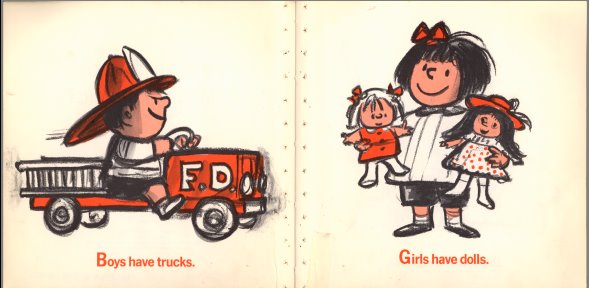Designing for the New Gender Era
This article highlights the change of traditional gender roles and how the new generation of designers and marketers have to evolve to include the new breakdown of the previous idea of ‘women’ and ‘men’. With these roles being more and more challenged in today’s society, the new world for appealing to men and women is becoming a wider and more general platform. The designers want to not only appeal to these “obscured” gender lines but to make sure they are accepted and comfortable in the setting of a society that is deeply rooted in a modern tone. Not only are the gender lines being more fluid but the role of women and men are being equalized therefore the overpowering masculine features of modern architecture is being switched out for softer textures and fabrics. This rise in the new form of Modernism is showing a new era of social change and therefore a new era of design.
Individuality
In creating this individualistic society filled with blurred gender roles and a new power role for women, these new designs and architecture is a new form of representation and sense of self. With this new rise of importance of self expression, comes a new era of importance on representation and how designers keep up with the changing tides of identity. With companies like Lego changing their branding to accommodate the growing markets of fluid sexuality and identity, more and more brands are rushing to make sure they fit into the new ‘status quo’ of open acceptance. As well as toys, we see new strides coming with the new trends of androgyny and male centered makeup. New ideas from designers are pushing for this new idea of androgyny where men do things that were previously marketed for girls and girls wearing things that have boxier frames. There seems to be no more rules when it comes to designing for the future in terms of ‘will women buy this blazer’ because the new answer is ‘yes’.
Design of the Public Space
The end of the article also highlights an issue brought up in the New York Time’s article on how the shared space and the inclusion of a gender-neutral design is an integral part of modern times and modern design. ‘Accommodation’ is brought up as the mode of conflict resolution and with that comes the introduction of a gender neutral space and having the built environment around us being inclusive to every group. The article also parallels the issues that might arise with the first steps into the gender neutral society to the issues that arose with accommodating to disabled people. The article spoke of how the issues of inclusion were met with rules, compliance, and inconvenience. This feeling of inconvenience makes the disabled and trans people feel as though they aren’t a part of the society to begin with. So in order to avoid the same sentiments shared by the lack of accommodation with disabled, the article speaks to treat everyone the same and to have basic places of comfort and safety be available to all people without the groans of having to change the predisposed molds.

Leave a Reply